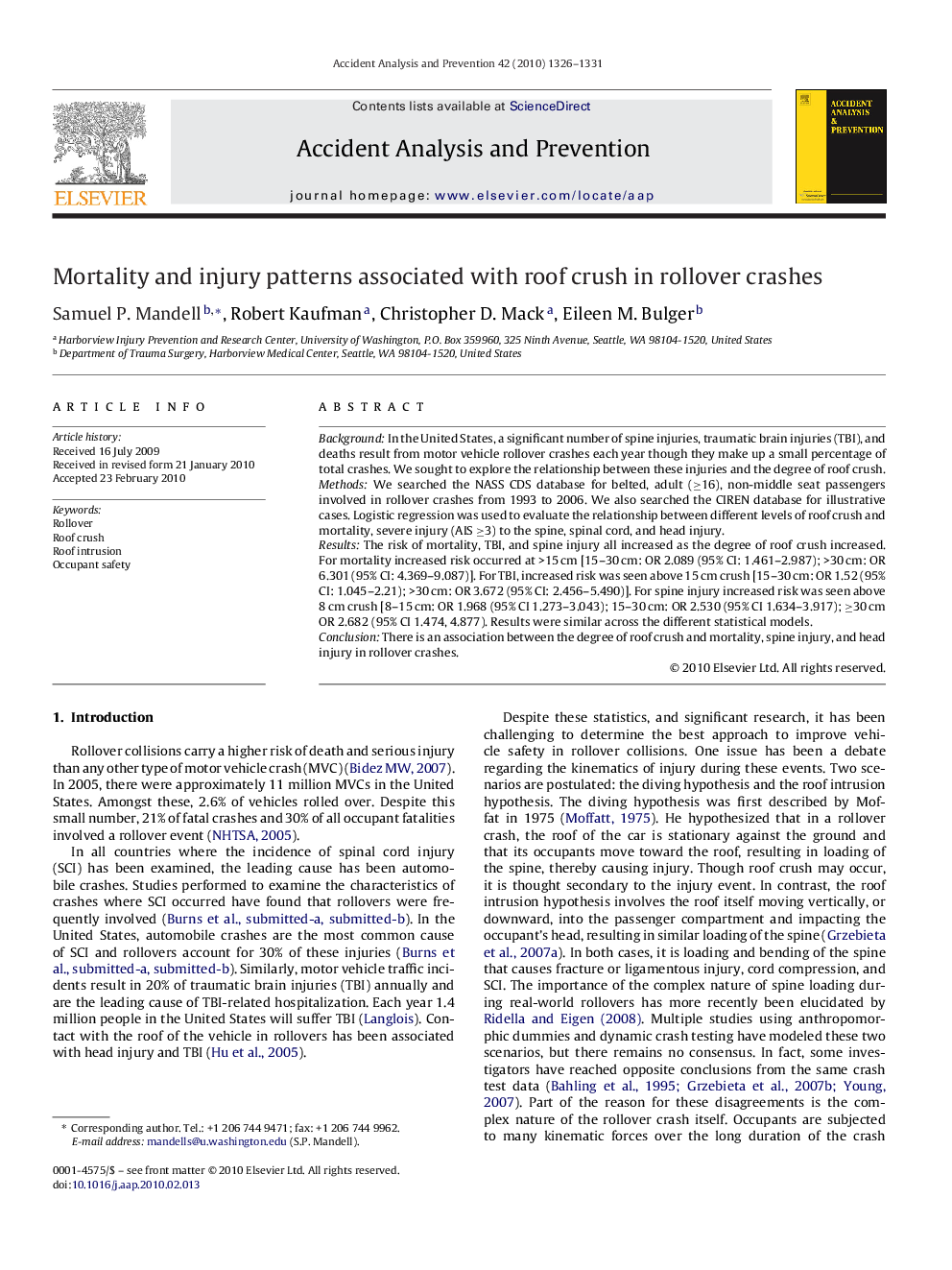| Article ID | Journal | Published Year | Pages | File Type |
|---|---|---|---|---|
| 573069 | Accident Analysis & Prevention | 2010 | 6 Pages |
BackgroundIn the United States, a significant number of spine injuries, traumatic brain injuries (TBI), and deaths result from motor vehicle rollover crashes each year though they make up a small percentage of total crashes. We sought to explore the relationship between these injuries and the degree of roof crush.MethodsWe searched the NASS CDS database for belted, adult (≥16), non-middle seat passengers involved in rollover crashes from 1993 to 2006. We also searched the CIREN database for illustrative cases. Logistic regression was used to evaluate the relationship between different levels of roof crush and mortality, severe injury (AIS ≥3) to the spine, spinal cord, and head injury.ResultsThe risk of mortality, TBI, and spine injury all increased as the degree of roof crush increased. For mortality increased risk occurred at >15 cm [15–30 cm: OR 2.089 (95% CI: 1.461–2.987); >30 cm: OR 6.301 (95% CI: 4.369–9.087)]. For TBI, increased risk was seen above 15 cm crush [15–30 cm: OR 1.52 (95% CI: 1.045–2.21); >30 cm: OR 3.672 (95% CI: 2.456–5.490)]. For spine injury increased risk was seen above 8 cm crush [8–15 cm: OR 1.968 (95% CI 1.273–3.043); 15–30 cm: OR 2.530 (95% CI 1.634–3.917); ≥30 cm OR 2.682 (95% CI 1.474, 4.877). Results were similar across the different statistical models.ConclusionThere is an association between the degree of roof crush and mortality, spine injury, and head injury in rollover crashes.
